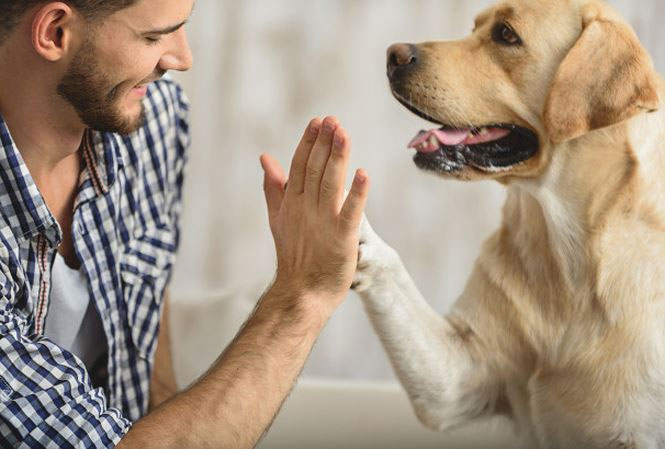New research: Why can dogs understand human language?
A new study shows that dogs can really understand human language. Even dogs handle the words they hear in a similar way to humans in the same area as the language processing area in the human brain.
This explains why people's best friends are excited when we say 'go for a walk' or when we respond to them in an affectionate tone.
More than a dozen dogs are trained to stay still in a magnetic resonance scanner that helps scientists track how their brains work when toys are hung high above.
When the team used the correct words to describe toys, or say nonsense words, different areas of the dogs' brains lit up.
Neurology professor Gregory Berns of Emory University (USA) said: 'Dogs can have different abilities and motivations to learn and understand human speech. They seem to show a nervous expression in front of the meaning of the words they have been taught, not just low-level reflexes like the reflexes discovered by Russian scientist Pavlov. " .

Dogs are close friends of humans.
Ashley Prichard, the first author of the study in Bern's psychological lab, said: 'Many dog owners think that their dogs know the meaning of some words, but there is not really much scientific evidence to prove it. And we want to get the data from the dog itself, not just based on the owner's judgment. '
Researchers focus on problems around the dog's brain mechanism when listening to a speaker, even when they hear only one word.
Berns said: 'We know dogs are capable of handling at least some aspects of human language because they can learn to follow verbal commands'.
In the latest study, published in Frontiers in Neuroscience, owners of 12 other dogs trained their dogs for months with the aim of finding and bringing back two different objects when they called their names. objects. To make it easier to distinguish, they chose the first item to be a stuffed animal, while the second was a hard toy made of rubber. After bringing these items back to the owner, the dogs will be rewarded with food or praised.
After completing the training above, the dog is placed in the scanner position and the owner stands in the blank, and in certain times, they say the name of the item that the dog has to find for the dog. See that item.
Prichard said: 'We hope to see dogs differentiate between the words they know and the words they don't know. And what is surprising is that the results go against human studies, when people often show better neuronal activation for known words than new words. '
This study also does not fully show that words are the most effective way for owners to communicate with their dogs.
In fact, other recent studies by the same group of scientists have shown that the nervous system consolidates dogs more closely with visual and olfactory cues than signals obtained from speech.
Prichard also explains: "When people want to teach their dog something, they often use voice commands because it is a man's habit. However, from a dog's perspective, one Visual commands can be more effective, helping dogs learn more quickly. "
- Found evidence that dogs understand human language
- Science thinks dogs can talk like humans
- Children understand dog mentality through barking dogs
- The secret of dogs: Try to learn to speak human language!
- Future technology helps people talk to animals
- New research finds the special ability of dogs
- Dogs understand morality and imagination
- Human language derives from the song of apes and birds
- Why do we understand strange language the first time we contact?
- Dogs understand and know what people want
- Dogs can really understand people's emotions
- Decoding language of the dog species
 Animal 'suffering' after hibernation
Animal 'suffering' after hibernation Why do goats climb well?
Why do goats climb well? Scientists were surprised to see chimpanzees eating turtles
Scientists were surprised to see chimpanzees eating turtles Giant catfish died deadly due to drought in Thailand
Giant catfish died deadly due to drought in Thailand